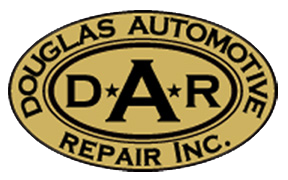With heavy rain pounding many parts of the country, there’s a good chance that you’ll drive through high water that could damage your vehicle. Even though your vehicle may not have been flooded or completely covered in water, you should follow these guidelines to check for damage due to water intrusion or contamination:
- Check interior carpets, upholstery and door and trim panels for dampness. If they are wet, then the vehicle will need professional attention. If you simply let the carpet dry, it will quickly grow mildew and give off nasty odors. Seat brackets, motors and modules should also be checked for rust and proper operation.
- Pull the engine oil and transmission fluid dipsticks and differential plug. If the fluid appears milky, diluted, is no longer its original color or is beige in color, then it is likely the pans contain water. The vehicle should be towed to your repair shop. Driving the vehicle with water present may damage the internal parts and require extensive overhaul or repairs. However, some new synthetic differential fluids may appear to be milky but are not water contaminated. When in doubt, a professional automotive technician should make the evaluation.
- Check the air filter for water. If it is wet, replace the air filter and change the oil.
- Check the undercarriage, bumpers, radiator area and frame for mud, grass, dirt, debris and rust. If any of these are present, the vehicle should be washed and cleaned as soon as possible.
- Have the brake system checked by a professional automotive technician.
- Check the exterior lights for moisture and water. Replace headlights and bulbs that contain water.
- Listen for abnormal noises while the engine is running. Make a note of where the noise is coming from and take the vehicle to a professional automotive technician as soon as possible. Pay particular attention to the alternator, serpentine belt, starter, power steering unit, air conditioner and wheel bearings.
- Inspect the suspension joints and lubricate as necessary. Many newer vehicles are lubricated at the factory for life; however, these joints should be checked for rust.
It all comes down to how much water the vehicle took in and where it reached. By being aware and following these simple guidelines, you can help minimize the potential for damage to your vehicle.
If you think your vehicle may have sustained water damage, give us a call today to schedule a vehicle inspection.
This entry was posted in Vehicle Inspection and tagged vehicle inspection, Water Damage on .

